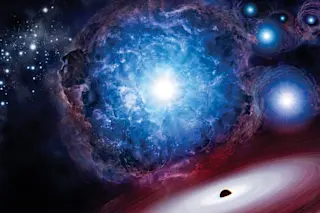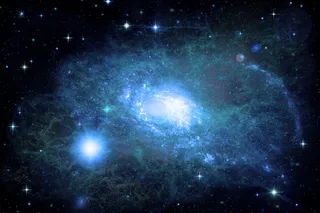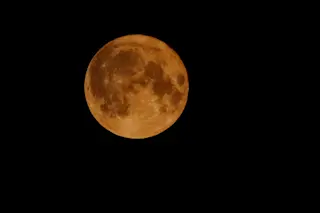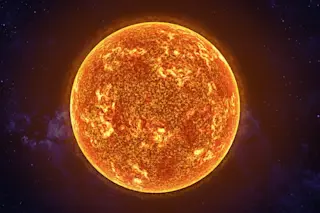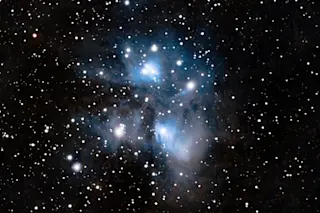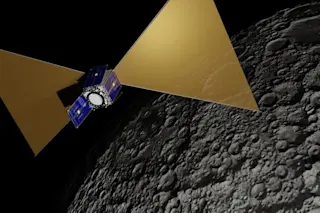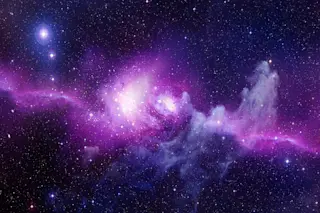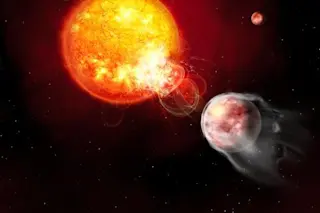Archaeologists and astronomers don’t seem to have much in common. One digs into the earth while the other looks at the sky, and a stone tool once wielded by Homo erectus couldn’t be more different from an exploding star at the edge of the visible universe. But the sciences are actually fundamentally similar: Both try to understand the present by looking deep into the past, whether it’s the origin of the human species or of the universe.
For some astronomers, the parallels are even closer. One of the great mysteries of the cosmos is how and when and why the first stars flared into light out of the darkness that followed the Big Bang. Nobody knows for sure what those first stars looked like, or how they lived and died. But their emergence set the stage for everything that followed — all of the planets, stars and galaxies that light up the night sky. Understand the first stars, and you understand how the universe took shape.
The gulf in time and space is so great that even the most powerful telescopes can’t see the faint light from those first stars. But in recent years, a new breed of astronomers — stellar archaeologists — has realized there’s a way to understand them by looking close to home, within and around the Milky Way. By examining the chemistry of the oldest nearby stars, they’re beginning to understand the conditions in which those stars formed, conditions created in part by the short-lived and massive first generation of stars that came before. “We can still see their environmental impact, the pollution that these massive stars introduced,” says Avi Loeb, head of the astronomy department at Harvard.
The good news is that second-generation stars are all around us. “Some of the best examples we have are just a few hundred light-years from us,” says Timothy Beers, the provost’s chair of astrophysics at Notre Dame. “They’re really not that far away, and it tends to surprise people that we can understand the distant past by looking so close to home.”
Searching for the Second Generation
Just because they’re nearby, however, doesn’t mean these second-generation stars are easy to find. In fact, “they’re quite rare,” says Loeb. In the Milky Way’s spiral arms, most stars, including the sun, formed much later, when the universe was already middle-aged, about 4 billion to 6 billion years ago. And even in the core of the Milky Way, which formed earlier and where the odds are greatest of finding an ancient star, Loeb says, “they still represent less than 1 percent of all stars.” Merely identifying which stars are truly old, therefore, is the first, tricky step.
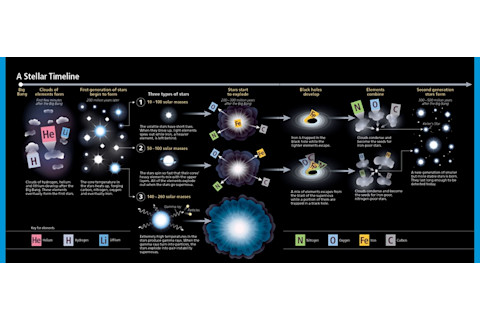
(Credit: Roen Kelly/Discover)
Roen Kelly/Discover
One key factor distinguishes an ancient star from a youngster like our sun: its composition. The only elements that emerged from the Big Bang were hydrogen, helium and tiny bits of lithium, so that’s what the first generation of stars must have been made of.
Heavier elements — including nitrogen, oxygen, iron, carbon and more — were forged in the nuclear furnaces at the cores of those first stars, then spewed into interstellar space when the stars exploded. “What’s remarkable to me,” says Beers, “is the elements that we associate with carbon-based life today are produced by the first-generation stars.”
These liberated heavier elements, which astronomers call “metals” (even oxygen is a metal in astronomer-speak), contaminated the hydrogen and helium drifting between the stars. The second generation of stars would therefore include these ingredients — “environmental pollution” as Loeb calls it. These metals are the fossils stellar archaeologists search for, using a star’s spectrum, or light signature, to probe its composition.
Second-generation stars are still metal-poor compared with modern stars like the sun, whose birth clouds were enriched by several generations of stars over billions of years. So the search for the oldest living stars is the search for those with only the faintest of impurities, usually expressed as the ratio of iron to hydrogen. The purer the star — the lower the iron-to-hydrogen ratio — the older it almost certainly is.
For decades, astronomers found such stars by chance, not realizing the archaeological promise they held. Right now, “we know of 50 or so stars that have less than one three-thousandth of the iron abundance in the sun. And there are six stars — only six — that have less than one ten-thousandth of the iron abundance,” Loeb says. That would put their birth within an impressive half-billion years, at most, after the Big Bang.
Then, in February 2014, a team led by Stefan Keller of the Australian National University announced the discovery of a star with at most one ten-millionth as much iron as the sun. “It’s a star with no iron in its spectrum whatsoever,” says Michael Norman of the University of California, San Diego. “No one has ever seen a star like this.”
That lack of iron suggests that Keller’s Star, as it’s known, could be the most ancient yet, possibly dating back to 200 million years after the Big Bang. Not only was it an amazing find on its own, but it also changed everything astronomers thought they knew about the first stars.
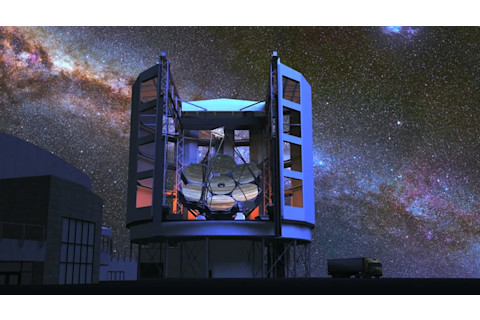
The upcoming Giant Magellan Telescope will help study ancient stars. (Credit: GMTO Corp)
GMTO Corp
Despite its lack of iron, Keller’s Star has measurable amounts of carbon, oxygen and other metals. “That’s the really remarkable thing,” says Beers. “We see a pattern that for the time being can only be explained by a population of first-generation stars.”
Understanding the First Generation
Originally, astronomers simply assumed that when the first stars went supernova, the explosions uniformly spewed their innards far and wide. But even before finding Keller’s Star, they’d already begun to wonder if this picture was oversimplified.
“We’ve seen this distinctive element pattern in other old stars as well,” Beers says — very little iron, but more of the other metals than you’d expect. The implication: Some first-generation or progenitor stars exploded evenly, as expected, but others must have somehow held onto iron during their death throes while allowing lighter metals to spread out into space.
Key among these lighter elements is nitrogen. Some iron-poor stars (including Keller’s) have a fair amount of nitrogen, while others have essentially none. “My suspicion,” Beers says, “is that this variation in nitrogen tells us that we’re seeing evidence for at least two classes of progenitor stars.” Stellar archaeologists had found the stellar equivalent of Neanderthals, a separate but similar species that coexisted with our suspected forebears.
According to theorists like Volker Bromm of the University of Texas at Austin, the iron-poor, nitrogen-rich second-gen stars come from one specific class of progenitor stars with 10 to 100 times the mass of the sun. Simulations show that these stars would die in dramatic explosions that leave behind black holes, which would trap the heaviest elements in place. “Lighter stuff like carbon and oxygen and nitrogen will get out,” says Bromm.
The other class of first-generation star, whose imprint is seen in iron-poor, nitrogen-poor stars, generally would have been even bigger, between 50 and 100 solar masses. (The apparent overlap between the two classes reflects uncertainties in the numbers, but modelers know for sure that this second category would have been more massive.)
“When stars this massive form,” says Beers, “they tend to spin very rapidly.” In contrast to the first group, the metals in these larger stars get churned up to the upper levels, so they’re thoroughly mixed in when the star explodes. That means the black holes left behind swallow a representative mix of elements, not just the heavier ones — and that some iron is allowed to escape. Second-generation stars made from this debris would still have relatively little iron, like any other ancient star, but they’d have correspondingly little nitrogen as well.
So the first stars came in at least two distinct flavors, and astronomers suspected an even more rare third kind, downright enormous between 140 and 260 solar masses. These gigantic stars would have had surface temperatures of millions of degrees, making them not red-hot or blue-hot, but hot enough to produce gamma rays, the most energetic form of light. The laws of physics dictate that gamma radiation can decay into pairs of elementary particles: electrons and positrons. The star’s gamma rays exerted outward pressure, keeping the massive star from collapsing, but once they’d turned into particles, that outward pressure would be gone, resulting in a catastrophic collapse. This would trigger gigantically powerful supernovas, known to astronomers as “pair-instability” supernovas, which would have added their own, slightly different mix of elements to interstellar gas clouds, and to stars that formed from them.
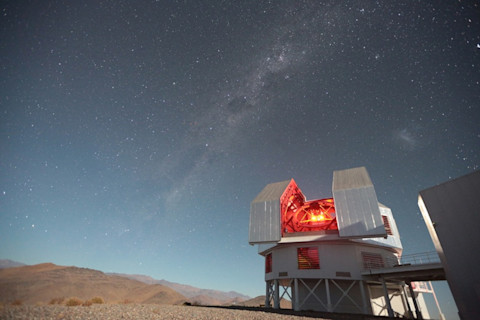
The Magellan Clay telescope. (Credit: Anna Frebel/MIT)
Anna Frebel/MIT
According to Harvard’s Loeb, “one of the holy grails of searching for metal-poor stars is to find evidence for these early pair-instability supernovae.” And sure enough, Beers and a mostly Japanese team reported in Science in 2014 that a nearby star known as SDSS J0018-0939 is almost certainly a second-generation star bearing the chemical imprint of such an explosion.
From Ancient Stars to Ancient Galaxies
This three-species taxonomy of primordial stars might well reflect the mix of objects that first emerged after the Big Bang, but actual evidence has proven relatively sparse. That has begun to change, however, thanks to observers like MIT’s Anna Frebel, who got her start in old-fashioned single-star stellar archaeology as an undergraduate in the early 2000s.
A few years ago, Frebel realized that some of the dwarf galaxies that orbit the Milky Way might be especially rich sources of ancient stars. In April 2014, she and two colleagues announced in the Astrophysical Journal they’d found the perfect candidate. A dwarf galaxy known as Segue 1 hovers just beyond the edge of our own. Simulations of the early universe suggest that galaxies like this were the first to arise, as hydrogen and helium gas began to clump together. They served as the building blocks for full-size galaxies by colliding into and merging with each other.
What sets Segue 1 apart from other dwarf galaxies is that it stopped forming stars when the second generation of stars appeared. Astronomers aren’t sure why, but they posit that the tiny galaxy ran out of the gases that fuel star birth early on. Whatever the reason, the result is a gold mine for researchers like Frebel who seek more data on these ancient stars. “We think that most, if not all, of the stars in this galaxy were formed just a hundred million years after the Big Bang. And that,” she says with more than a little understatement, “is kind of old.”
That means Segue 1 could go a long way toward supplying theorists with the information they need to fully understand the first stars in all their variety — nothing less than a comprehensive picture of what the universe looked like when it lit up for the first time. The work is enormously painstaking, and so far, Frebel and her colleagues have only been able to determine that Segue’s thousand or so stars are indeed very old.
Probing the finer details of those ancient, extragalactic stars’ chemical structures would take many years, even with the most powerful telescopes on Earth or in space. That’s because Segue is far away (even if we’re relative neighbors), and its stars are faint compared with the ones stellar archaeologists have studied to date. “At this point,” says Bromm, “people like Anna have maybe a handful of high-quality spectra for the brightest stars.” But things are likely to change before long.
A Gargantuan Task
Stellar archaeologists are eager to get their hands on the new class of giant telescopes that will be going online in the early 2020s, including the Thirty Meter Telescope, the Giant Magellan Telescope and more. It used to be that astronomers had trouble finding enough stars to study. Now, with Segue 1 — and with Frebel on the lookout for other ancient galaxies — they have too many. The upcoming telescopes, with nearly 10 times the light-gathering power of existing instruments, should break the logjam.
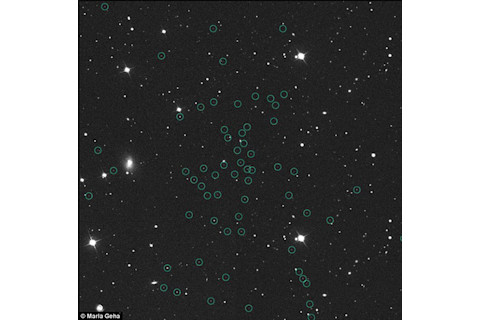
The stars of dwarf galaxy Segue 1 (circled in green) are a boon to stellar archaeologists because they’re all extremely old second-generation stars. (Credit: Marla Geha/Yale University)
Marla Geha/Yale University
“It’s really an exciting time,” says Bromm. “We now have these high-precision laboratories” — that is, second-generation stars — “which are telling us exactly what the universe was like at the very earliest times,” he says. “Before this, we were only in the ballpark.” And soon, astronomers will have the tools to study them in unprecedented detail.
Loeb agrees. Until now, astronomers have studied the early history of the universe directly, trying to peer farther and farther away at older light, in an attempt to tease out the secrets of how the cosmos first burst into light. “Now we’re doing cosmology by digging right in our own backyard,” he says.
And it’s paying off. “We have a reasonable grasp on the chapter titles in the story of the how the first stars appeared and what they looked like,” says Beers. “Now we’re starting to write the paragraphs.”
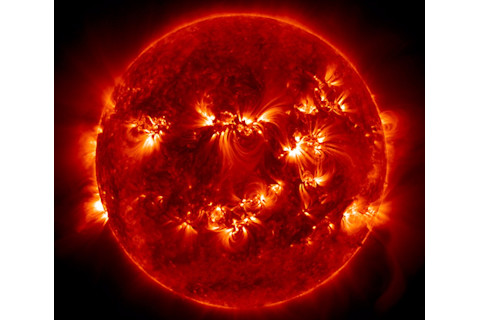
(Credit: Solar Dynamics Observatory/NASA)
Solar Dynamics Observatory/NASA
Solar Siblings
Most stellar archaeologists look for traces of the first stars in the universe, but Ivan Ramirez is interested in a more recent vintage. He wants to find the long-lost siblings of the sun — the hundreds or perhaps thousands of stars that condensed, along with our home star, from a single cloud of gas about 4.6 billion years ago.
“If we can figure out the detailed properties of the place where our sun and its planets formed,” he says, “we might be able to find out if those conditions had anything to do with the fact that life exists here on Earth.”
At first, he didn’t like the odds. “It was a project that was most likely to fail,” says Ramirez, an astronomer at the University of Texas at Austin. Although the sun’s birth brood would have huddled together in a loose cluster at first, they would have gradually split up. By now, says Ramirez, “they could have wandered thousands of light-years away from us.”
He and his colleagues didn’t expect their modest 2012 search to find anything; they were just testing the techniques they’d eventually use for the real search. It was a welcome shock, then, when the team discovered a star called HD 162826.
Based on the star’s location and motion, they calculated that it must have been very close to the sun billions of years ago. And when the astronomers analyzed its chemical composition, the match was uncanny. The practice run was already proven sound. “The actual discovery,” Ramirez says, “was a bonus.”
That future search is still in the works, and Ramirez hopes that improved technology, including the European Space Agency’s Gaia satellite, will help him find even more solar siblings. “We should be able to find at least half of the stars that were born with the sun,” he says.
And when they do, they’ll know at last what the sun’s long-lost birth family looked like — and the origins behind our star, Earth and everything that lives here.


